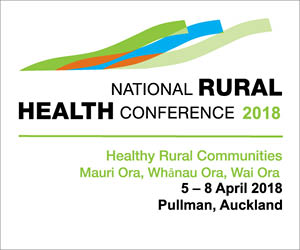LEARNING OBJECTIVES
- Reading and reflecting on this article will enable you to:
- Have a raised awareness about the history of nursing journals and journal clubs
- Understand the benefits of journal articles to inform practice
- Reflect on personal use of nursing journals as one way of further developing evidence-based practice
- Gain confidence in discerning an article’s relevance for implementing practice change.
Aims of article:
- To trace the history and evolution of nursing journals and journal clubs
- To identify the benefits of nursing journal articles as a valid professional development tool
- To identify how nurses can use journal articles as a means to advance practice
- To understand how to critique research articles.
Honourable past
One of the first journal for nurses is thought to have been published on 6 March 1886 in New York1. Little is known about it other than it was aptly called The Nightingale with Florence Nightingale writings and work just decades before laying the foundation of professional nursing.
England’s more long-lasting nursing journal The Nursing Record2 was founded in 1888 by owner/editor Mrs Bedford Fenwick, an early advocate for nurse registration, which after changing its name to the British Nursing Journal in 1902, continued to be published until 19563. In 1900, the first issue of the American Journal of Nursing was launched by the forerunner of the American Nurses Association and is the world’s longest running nursing journal4. Just a few years later in 1908, New Zealand’s formidable first chief nurse, Hester MacLean, began publishing
New Zealand’s first nursing journal, Kai Tiaki, which in 1923 was bought by the forerunner of the New Zealand Nurses Organisation. It is still published today.
Growing alongside journals has been journal clubs. These begun in the 1800s, initially by medical doctors, to discuss research findings and to share the cost of journal subscriptions5. As the world of nursing magazines and journals evolved, including the advent of peer-reviewed research journals, nursing followed in organising journal clubs, and journal content has greatly assisted with shaping and influencing nursing knowledge, education and practice.
Traditionally, nursing journals were available only in hard copy, but many are now also published online and some are only online. Emerging technologies and digital platforms have transformed the type, availability and accessibility of knowledge sharing capacity among nurses globally.
Given the vast amount of globally available and accessible research information, what are the benefits of using journal articles as a valid professional development tool to improve nursing practice and what are the skills required to critique this literature?
Nurses as consumers of research
Firstly, what are the professional expectations of nurses as consumers and contributors to research? The World Health Organisation says research, evidence, and information are the foundation for sound health policies6.
Research is seen to provide nurses with new ways to assess, evaluate and deliver nursing care7. The International Council of Nurses (ICN) Position Statement on Nursing Research states:
“Research-based practice is a hallmark of professional nursing. Nursing research, both qualitative and quantitative, is critical for quality, cost-effective health care.” Therefore, ICN sees its roles as supporting nurses to “disseminate research and publish in international journals” and to “promote the use of research to inform evidence-based practice”8.
Ongoing learning is also a requirement by the Nursing Council of New Zealand for nurses to maintain their annual practicing certificate. The Council explains the importance of professional development to ongoing nursing competency, stating:
“The Council and the public have an expectation that all nurses will continue to learn and maintain their competence. Competence is the combination of skills, knowledge, attitudes, values and abilities that underpin effective performance as a nurse”9.
Nurses recognise that to provide competent care, continuing education is needed to ensure currency of knowledge and evidence-based practice10. Evidence-based practice involves integrated approaches to ongoing learning; and a problem-solving approach to clinical decision-making that incorporates a search for the best and latest evidence, clinical expertise and assessment, and patient preference values within a context of caring. It is recognised as one powerful strategy to enhance competently capable clinicians11.
Challenges for nurses as consumers of research.
Some of the challenges nurses’ experience when using research to inform practice, as the ICN recognises, is in navigating the sheer volume of available literature12. It was suggested back in 1998 that not knowing how to discern which research is valuable or not13 and being thwarted by clinical demands can also prove frustrating14, as is the ability to critique literature appropriately15 and interpret terminology16.
Accessing relevant literature
The ability to locate relevant research is closely linked to the technological capabilities of nurses. Having knowledge of reputable and reliable web-based tools such as databases and search engines can assist with saving time and search refinement. CINAHL is a bibliographic database providing research reports17, and the Cochrane Collection Database of systematic reviews provides reports of rigorous systematic reviews on clinical topics of interest18. Pubmed/Medline is a free online accessing database of references and abstracts on life sciences and bio-medical topics19.
Using key words relating to the information being researched is useful in focusing the search and retrieving relevant information, as can the use of naming specific authors if known. Research articles themselves provide reference lists, which are very useful sources to aid further exploration.
Framing research questions
Knowing what questions to ask in order to locate relevant research information is one way of making best use of the time and energy you invest in professional development. There are various ways for nurses to ask a research question they require information about, and many familiar with research skills will have a preferred format for achieving this. Some useful frameworks include:
- Critically Appraised Topic (CAT) asks a relevant question, searches for information, appraises the value of information found and then uses results as a basis for presentation to peers20. Nursing Review’s regular evidence-based practice article uses the CAT framework: www.nursingreview.co.nz/subject/clinical/evidence-based-practice
- PICOT is an acronym with the five letters standing for the different elements of a clinical question. So P stands for (population/patient problem), I (issue of interest), C (comparison), O(outcomes), and finally T is for (time taken for intervention to achieve the outcomes)21,22. What follows is an example of applying the PICOT format to developing a research question: In elderly female residential care adults(P) how does the use of wet wipes after defaecation(I), compared with not using wet wipes(C) affect the incidence of urinary tract infections(O) and antibiotic use(O) during a three month period(T)?
When appraising research nurses can check if the information found provides answers to their original question.
Critiquing literature and appraising evidence
Whether nurses choose to use journal articles as a casual means of maintaining knowledge currency, or more importantly, to inform and guide their practice, the ability to critique what they read is important (see critiquing checklist sidebar).
Deciding if an article is of value to the reader will be determined by their original search focus and question. Some nurses will evaluate the quality of the evidence at the time of reading the article while others prefer to use a formal research evaluation checklist of which there are many available both medical and nursing23. Tools available from the Joanna Briggs Institute or American Nurses Association can assist nurses to appraise evidence24,25.
While some nurses prefer to work autonomously, others perfeer to be part of a group and journal clubs provide a great forum for sharing knowledge, skills, expertise and research workload.
Learning through journal clubs
Journal clubs are a valuable means of assisting nurses to work collaboratively to read, interpret, assimilate and discern the value of information to implement or guide practice change28,29.
As journal research has evolved, so, too, have the ways to share and interpret research these contain. Journal clubs can be in person or online.
Benefits of journal clubs:
- Promotes a forum for knowledge sharing of current clinical research
- Facilitates the learning process
- Promotes knowledge of current evidence-based practice
- Encourages research utilisation
- Enhances literature critique and appraisal skills
- Encourages nursing interaction, dialogue and networking
- Promotes team building
- Promotes cost effective evidence-based practice30,31.
Also available are “virtual” journal clubs where participants sign up online to undertake a primary appraisal of an article. Ensuing discussions are moderated and attached to the appraisal. The great advantage of this model is the diverse number of participants who contribute feedback globally.32 Journal clubs and blogs33 are increasingly popular.
The professional development benefits of nursing journals
The literature identifies many benefits for using nursing journal research. These include but are not restricted to:
- disseminating relevant, timely publication of articles for practical use
- topic variety ensures there is something for everyone
- many articles are peer reviewed, which aims to reassure the reader of the quality of the information submitted
- articles’ length makes them easy to read and does not always involve a heavy time investment to advance some knowledge
- journal articles are versatile and useful for autonomous or group consumption
- they are readily accessible and available
- contain current information of professional interest either specialist or generalist
- are affordable
- enhance consumer choice
- are available in hard copy or online
- provide excellent reference lists to further enhance learning on specific topics
- are easily disseminated and shared35.
From quick scan to indepth reading
There are different levels of nurse interest in accessing and reading journal research articles. A quick scan of topics in the latest journal(s) available at work or online soon identifies for the reader if there is anything of interest for them that they may wish to read. Casual reading serves to inform the reader at a glance by asking, then answering, a line of questioning about a given topic. Some nurses are content with this basic level of knowledge acquisition. For others, reading an article may generate discussion with their peers and serve to ignite a desire to find out more about the topic or questions raised. The reader then has a choice about whether or not to pursue further enquiry either independently or as a group.
Nursing journals remain a valid and valuable time honoured means of professional development, whether in print or on-line. They have adapted with technology and are even more accessible and available for nurses to use. There has also been the evolution and offering of online, and print, professional development opportunities like the one you are take part in right now.
Conclusion
The history of nursing journal publications can be traced back to the late 1800s and early 1900s, as can journal clubs. Over the years, nursing journals and journal clubs have continued to evolve and now enjoy a significant online presence. Not only are journal articles available digitally, but so, too, are professional forums allowing formal and informal sharing and dissemination of nursing knowledge globally.
Key stakeholders and regulatory nursing bodies require nurses to maintain ongoing learning and to use this knowledge to advance practice in ways that positively impact patient outcomes. Nurses experience varied challenges when attempting to use research to inform practice. Computer literacy and abilities to read, assess, critique, and evaluate research literature are vital skills that assist to minimise challenges experienced. Knowledge of web-based tools and online services offer robust nursing and health focused information that is readily available and accessible.
There are many benefits for using nursing journals and clubs to advance knowledge and inform practice. Journal clubs are easy to establish and are a worthwhile forum for collegial sharing and knowledge acquisition.
The story of evidence-based practice in nursing is now long, with many successes, contributors, leaders, scientists and enthusiasts. Much has been done to make an impact and much remains yet to be accomplished36. As a community of nurses, we all need to understand the role we play in the evidence-to-action continuum and although these roles will be different it is important that we feel informed enough to ask good questions, develop our skills and ensure that we work closely with colleagues to ensure the research investment is used to best effect37.
Checklist for reading and critiquing a research article
- Critiquing the research article
a) Title describes the article
b) Abstract summarises the article
c) Introduction makes the purpose clear
d) Problem is properly introduced
e) Purpose of the study is explained
f) Research question(s) are clearly presented
g) Theoretical framework informs the research
h) Literature review is relevant, comprehensive, and includes recent research
i) Methods section details how the research questions were addressed or hypotheses were tested
j) Analysis is consistent with the study questions and research design
k) Results are clearly presented and statistics clearly explained
l) Discussion explains the results in relation to the theoretical framework, research questions, and significance to nursing
m) Limitations are presented and their implications discussed
n) Conclusion includes recommendations for nursing practice, future research, and policymakers - Determine the level and quality of the evidence using a scale26.
- Decide if the study is applicable to your practice27.
So what is involved in setting up a clinically-based journal club?
- Decide if a journal club might be useful and the parameters of size e.g. unit based, hospital wide etc.
- Gain support of unit managers and or senior nursing staff
- Discuss benefits objectives, scope of work, timetable and key stake holders
- Determine meeting schedule and length
- Decide if refreshments will be offered
- Identify a facilitator (initially this could be a clinical educator or clinical nurse specialist, nurse practitioner, nurse manager, then journal club members could take turns to lead subsequent journal club sessions.
- Identify a topic(s) of interest
- Select and distribute the research article with discussion questions to focus reader’s attention and allow participants time to prepare for the meeting
- Hold the journal club
- Evaluate the club at the conclusion of the session: evaluate amendment proposals and consider recording the session for those unable to attend
- Conclude by determining the date of the next meeting30,34.
Download the learning activity here>>
About the author:
Noreen McLoughlin RN MA (Applied) Diploma Adult Education & Training, is an independent health auditor, self-employed professional development consultant for the last nine years and a registered nurse for 30 years.
This article was peer reviewed by:
- Tania Thompson RN BN, St George’s Hospital, Christchurch
- Nadine Goldsmith RN BN MN Whanau Ora NP candidate, Awarua Social & Health Services
- Yvonne Keen, 3rd year BN student, Southern Institute of Technology, Invercargill
Recommended reading
1. KAPLAN L (2012) Reading and Critiquing a research article American Nurse Today October 2012 Vol 7 (10)
www.americannursetoday.com/article.aspx?id=9568&fid=9534
2. STEVENS K (2013) The impact of evidence-based practice in nursing and the next big ideas OJIN: The Online Journal of Issues in Nursing18(2) Manuscript 4.
3. MELNYK B (2010), Evidenced-based practice: Step by step, the seven steps of evidence based practice Am J Nurs 2010. 110 (01) 51-52
REFERENCES
1. AMERICAN ASSOCIATION FOR THE HISTORY OF NURSING
www.aahn.org/nursinghistorycalendar.html Retrieved July 2014.
2. ROYAL COLLEGE OF NURSES www.rcn.org.uk/development/library_and_heritage_services/library_collections/rcn_archive/historical_nursing_journals
3. UK CENTRE FOR THE HISTORY OF NURSING AND MIDWIFERY
www.nursing.manchester.ac.uk/ukchnm/archives/bjn Retrieved July 2014.
4. AMERICAN NURSES ASOCIATION www.nursingworld.org (search for “Basic Historical Review”) (Accessed July 2014).
5. CASSIE F (2009) NZ Nursing History: 100 years of NZNO, Nursing Review September 2009 www.nursingreview.co.nz/issue/september-2009/nz-nursing-history-100-years-of-nzno/#.U9WFOp2N2Uk
6. WORLD HEALTH ORGANISATION Health Topic: Research
www.who.int/topics/en Retrieved July 2014.
7. GALLAGHER C Conducting Nursing Research http://rnjournal.com/journal-of-nursing/conducting-nursing-research Retrieved July 2014.
8. INTERNATIONAL COUNCIL OF NURSES (2007) www.icn.ch/publications/position-statements/nursing-research Retrieved July 2014.
9. NURSING COUNCIL OF NEW ZEALAND Continuing competence requirements: www.nursingcouncil.org.nz (retrieved July 2014).
10. DUFF B, GARDNER G, & OSBOURNE S (2012) An integrated educational model for continuing nurse education. Nurse Education Today 2012
Dec, 21.
11. DYSON L, HEDGECOCK B, TOMKINS S, & COOKE G (2009) Learning needs assessment for registered nurses in two large acute care hospitals in urban New Zealand Nurse Education Today Nov, 29(8):821-8.
12. INTERNATIONAL COUNCIL OF NURSES (2012) Closing the gap: from evidence to action www.icn.ch
13. MULHALL A (1998) Nursing research and the evidence. Evidence-Based Nursing 1998; 1:4-6doi:10.1136/ebn.1.1.4.
14. FINEOUT-OVERHOLT E, LEVIN R & MELNYK B (2005) Strategies for advancing evidence-based practice in clinical settings. Journal of the New York State Nurses Association Fall 2004/2005 28-32. http://bmhlibrary.info/15884483.pdf Retrieved July 2014.
15. KAPLAN L (2012) Reading and Critiquing a research article American Nurse Today October 2012 7 (10)
www.americannursetoday.com/article.aspx?id=9568&fid=9534 Retrieved July 2014.
16. COUGHLAN M, CRONIN P & RYAN F (2007) Step-by- step guide to critiquing research. British Journal of Nursing 2007, 16:11 658.
17. CINAHL COMPLETE: Full Text Nursing Journals
www.ebscohost.com/nursing/products/cINAHL-complete Retrieved June 2014.
18. COCHRANE DATABASE OF SYSTEMATIC REVIEWS IN NUMBERS (2014)
www.cochrane.org/cochrane-reviews/cochrane-database-systematic-reviews-numbers Retrieved June 2014.
19. PUBMED www.ncbi.nlm.nih.gov/pubmed Retrieved July 2014.
20. UNIVERSITY COLLEGE OF LONDON Critical appraisal of a journal article.
www.ucl.uk/ich/services/library/training/critical-appraisalpdf Retrieved July 2014.
21. McKIBBON K & MARKS S (2001) Posing clinical questions: framing the question for scientific inquiry. AACN Clinical Issues 2001;12(4):477-81.
22. STILLWELL S, FINEOUT-OVERHOLT E, MELNYK B, & WILLIAMSON K (2010). Evidence-Based-Practice, Step by step: Asking the Clinical Question A Key Step in Evidence-Based Practice. American Journal of Nursing 2010 110(3)58-61 www.nursingcenter.com/Inc/journalarticle?Article_ID=982283 Retrieved July 2014.
23. RYAN F, CRONIN P & COUGHLAN M (2008) Undertaking a literature review: a step- by- step approach. British Journal of Nursing 2008, 17: 1, 38-43
24. JOANNA BRIGGS INSTITUTE Evidence Based Practice Database Info
www.libguides.library.qut.edu.ac/databases/jbi Retrieved July 2014.
25. AMERICAN NURSES ASSOCIATION ANA’s Research Toolkit.
www.nursingworld.org/Research-Toolkit/Appraising-the-Evidence
26. KAPLAN L. (2012). Reading and Critiquing a research article
American Nurse Today October 2012 7(10).
www.americannursetoday.com/article.aspx?id=9568&fid=9534
27. O’NAN C (2011) The effect of a journal club on perceived barriers to the utilisation of nursing research in a practice setting. Journal for Nurses in Professional Development 27(4) 160-164.
28. ST PIERRE J (2005) Changing nursing practice through a nursing journal club MEDSURG Nursing Dec2005 14(6).
29. CHABOT J, CONNERS S, DE NIGRIS J, PANZERA A & PATEL P (2011) Evidenced-based practice and a nursing journal club: An equation for positive patient outcomes and nursing empowerment. Journal for Nurses in Professional Development 27(5) 227-230.
30. THE BLOG OF LIPPINCOTTS EVIDENCE-BASED PRACTICE NETWORK Using a journal club to increase EBP knowledge. (2012) www.nursingcenter.com Retrieved July 2014.
31. DUFFY J, ELPERS S, HOBBS T, NIEMEYER-HACKET N & THOMPSON D (2011) Evidence-based nursing leadership: Evaluation of a joint academic service journal club. Journal of Nursing Administration 422-427.
32. PHILLIPS R & GLASZIOU B (2004) What makes evidence-based journal clubs succeed? Evidence-Based Medicine 2004;9:36-37.
http://ebm.bmj.com/content/9/2/36.full
33. WIKIPEDIA-Blog Retrieved July 2014.
34. KLEINPELL R (2002) Rediscovering the value of the journal club Am J Crit Care 2002;11:412-414.
35. MELNYK B (2005) Advancing evidence-based practice in clinical and academic settings. Worldviews on Evidence-Based Nursing 2(3) 161-165.
36. STEVENS K. (2013). The impact of evidence-based practice in nursing and the next big ideas. OJIN: The Online Journal of Issues in Nursing 18(2) Manuscript 4.
37. INTERNATIONAL COUNCIL OF NURSES (2012) Closing the gap: from evidence to action www.icn.ch
THE HOUR OF POWER:
Reading the article and undertaking this Professional Development Value of Journal Articles learning activity is equivalent to 60 minutes of professional development.
Discuss all your answers with a peer.























